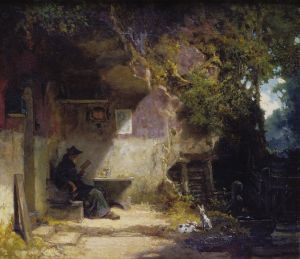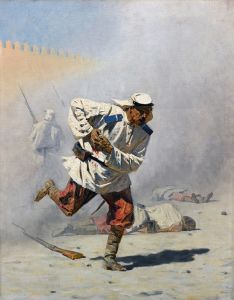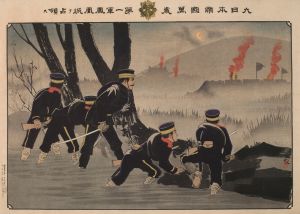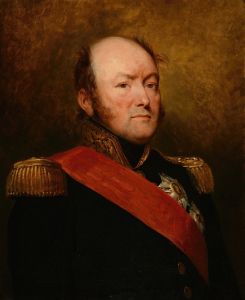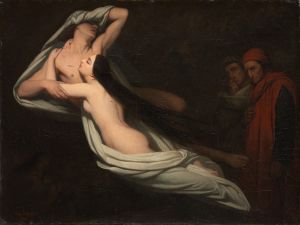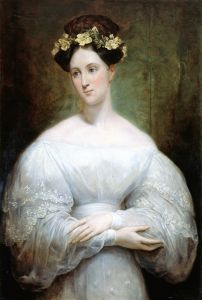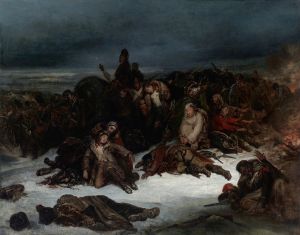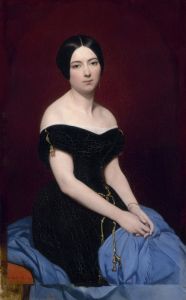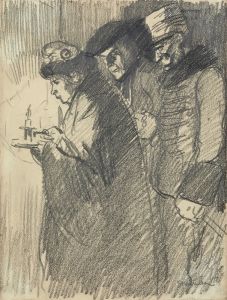
Quatre soldats de l’armée en déroute
A hand-painted replica of Ary Scheffer’s masterpiece Quatre soldats de l’armée en déroute, meticulously crafted by professional artists to capture the true essence of the original. Each piece is created with museum-quality canvas and rare mineral pigments, carefully painted by experienced artists with delicate brushstrokes and rich, layered colors to perfectly recreate the texture of the original artwork. Unlike machine-printed reproductions, this hand-painted version brings the painting to life, infused with the artist’s emotions and skill in every stroke. Whether for personal collection or home decoration, it instantly elevates the artistic atmosphere of any space.
Ary Scheffer's painting Quatre soldats de l’armée en déroute (Four Soldiers of the Defeated Army) is a work by the renowned 19th-century Dutch-French Romantic painter. Scheffer, known for his emotionally charged and often literary-inspired works, created this painting during a period when Romanticism was flourishing in Europe. The painting reflects themes of human suffering, resilience, and the aftermath of conflict, which were common in Scheffer's oeuvre.
The artwork depicts four soldiers in the aftermath of a military defeat. The soldiers appear weary and dejected, their expressions and body language conveying the emotional toll of war. The composition emphasizes their humanity, focusing on their shared experience of loss rather than glorifying battle. This approach aligns with Romanticism's interest in exploring the emotional and psychological dimensions of human experience.
Scheffer's use of light and shadow in the painting enhances the somber mood, with muted tones dominating the palette. The figures are rendered with a sense of realism, yet the overall atmosphere leans toward the dramatic and evocative, hallmarks of Scheffer's style. The painting does not specify a particular historical event or conflict, leaving its message universal and timeless.
Ary Scheffer was born in Dordrecht, Netherlands, in 1795 and later moved to Paris, where he became a prominent figure in the Romantic art movement. He was known for his close connections to literary and intellectual circles, including his friendships with writers such as Victor Hugo and George Sand. Scheffer's works often drew inspiration from literature, history, and contemporary events, and he sought to evoke deep emotional responses from his audience.
While Quatre soldats de l’armée en déroute is not as widely recognized as some of Scheffer's other works, such as The Temptation of Christ or Francesca da Rimini, it remains an example of his ability to convey profound emotion and explore the human condition through his art. The painting is housed in a private collection or museum, though specific details about its current location and provenance are not widely documented.
Due to limited available information about this specific painting, further details regarding its creation, exhibition history, or critical reception are not readily accessible. However, it stands as a testament to Scheffer's skill in portraying the complexities of human emotion and his engagement with the themes of his time.





